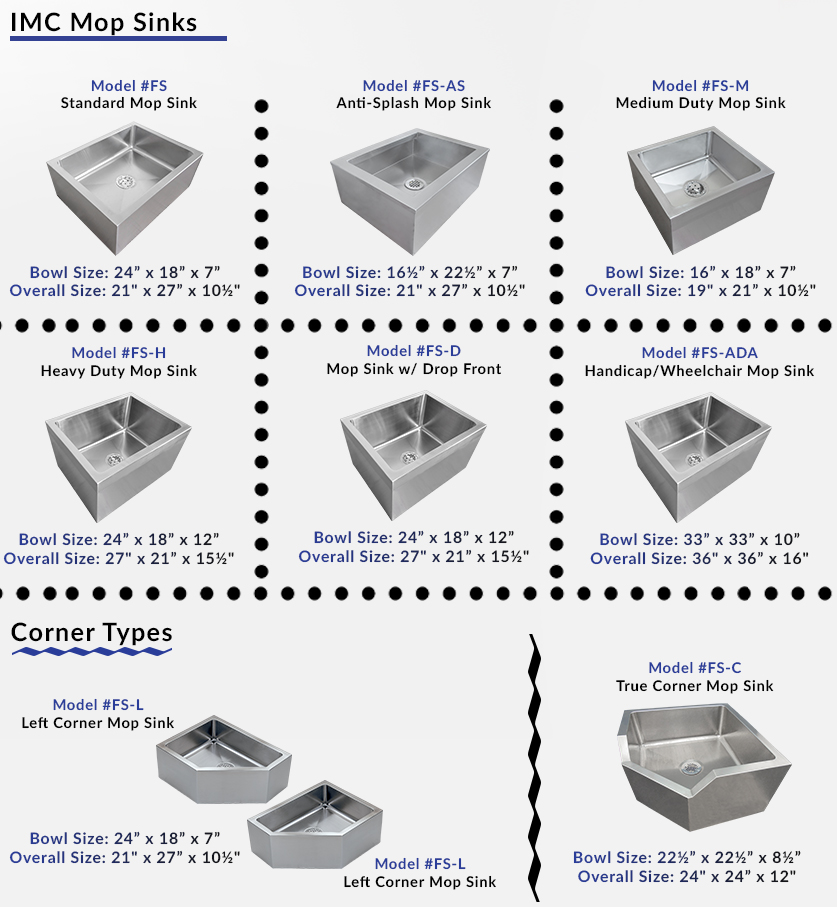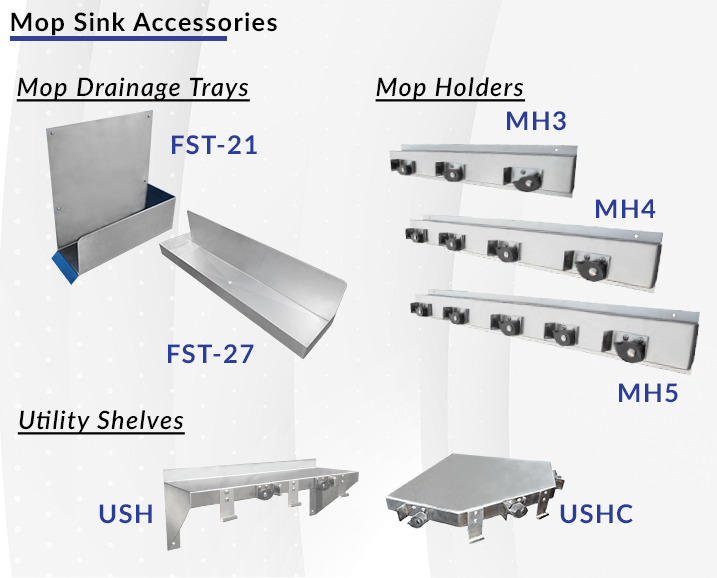Commonly Asked Questions About Mop Sinks
In the world of janitorial equipment, many items are utilized on a daily basis. Mops, brooms, brushes, cleaners & sponges are just a few common ones. However, mop sinks are the big centerpiece that perfectly complements all mopping activities (especially if you are using a big mop bucket). It comes as no surprise that hundreds of varieties of mop sinks exist in the marketplace, so getting a firm grasp on them is certainly a challenge. We are here to clear the air.
In this article, we’ll answer 5 of the most common questions about mop sinks & give you some useful tips on getting the most out of them. Let’s start off with questions #1.
1. I’m Considering a Marble Mop Sink, Why Should I Go With Stainless Steel?
Marble (also known as terrazzo) & stainless steel are two of the most common mop sink materials. Pros & cons exist for each:
Terrazzo
Pros
- Soft, smooth texture
- Cost effective
Cons
- Significant maintenance is required – dirt can hide in the grout lines requiring frequent resealing
- Susceptible to staining & scratching
- Sensitive to harsh cleaners & soaps containing water-solubles
Stainless Steel
Pros
- Resistant to corrosion
- Resistant to chemicals & grime – thanks to the non-porous nature
- Superior durability
Cons
- Higher cost
- Susceptible to fingerprints
Ultimately, the decision will come down to how often you use the mop sink & what kind of chemicals you are subjecting to it. In the long run, stainless steel will provide better value & less maintenance when compared to terrazzo style mop sinks.
2. Do I Need to Purchase a Faucet With My Mop Sink?
The decision is up to you, but a service sink faucet (IMC Model #SSF) provides many benefits. A faucet provides an easy way to rinse your mop head/ bucket regularly. This means more convenience for you & less time wasted. A mop sink paired with a service faucet creates a complete janitorial system.
However, if you are solely using your mop sink for emptying mops, then a faucet will be unnecessary. Here’s a look at IMC’s service sink faucet:

 3. How Do I Install a Mop Sink the Right Way?
Installing a mop sink can be more difficult than it looks.
Before we begin, most mop sinks have one of the following drains: a 4″ OD drain or a 2″ IPS drain. Proper installation will come down what type of drain you are dealing with. We’ve written 2 separate guides for each drain. Click here for the 4″ OD installation. Click here for the 2″ IPS installation.
To sum up here, you will need to install a pipe stub for the drain, seal it using plumber’s putty (or a similar sealant) & perfectly align together the mop sink & drain. No gaps must be present at all – which means all gaskets & connections must be secured correctly.
4. What Shape & Size Mop Sink Should I Look Into?
First, check the amount of space you have allocated. Most mop sinks are rectangular or square shaped so be mindful of that. IMC’s smallest mop sink is Model #FS-M, which is 19″ x 21″ x 10½†overall. IMC’s largest mop sink is Model #FS-ADA, which is ADA compliant & comes out to a gigantic 36″ x 36″ x 16″ overall.
A word on corner mop sinks (IMC Models #FS-L, #FS-R, #FS-C) – if you have limited space available, a corner mop sink will come in handy & will open up your floor area at the same time. Here’s a quick rundown of IMC’s mop sinks with dimensions:

5. What Other Accessories Should I Consider?
Creating a complete mop sink package is key to maintaining cleanliness in your facility. With that in mind, we recommend mop drainage trays (IMC Models #FST-21, #FST-27) & mop holders (IMC Model #MH). A handy utility shelf (IMC Models #USH, #USHC) can also be paired with your mop sink for extra storage of cleaning supplies.

IMC understands the importance of facility maintenance & promoting hygiene in the workplace. Mop sinks are the best avenue for to drain dirty water into a contained unit rather than dumping it outside. To learn more about IMC’s utility sinks, click here.

*Disclaimer: The views and opinions expressed in this article are those of IMC/Teddy. Our content is intended to be used and must be used for informational purposes only. Please contact IMC/Teddy directly if you would like to feature this post on your webpage. Thank you.
Special Shape Wafer Cone,Walrus Giant Ice Cream Cone,Different Appearance Wafer Cone,Wafer Cones Suitable For Holding Soft Ice
Tianjin Yongkang Food Co., Ltd , https://www.yongkangfood.com